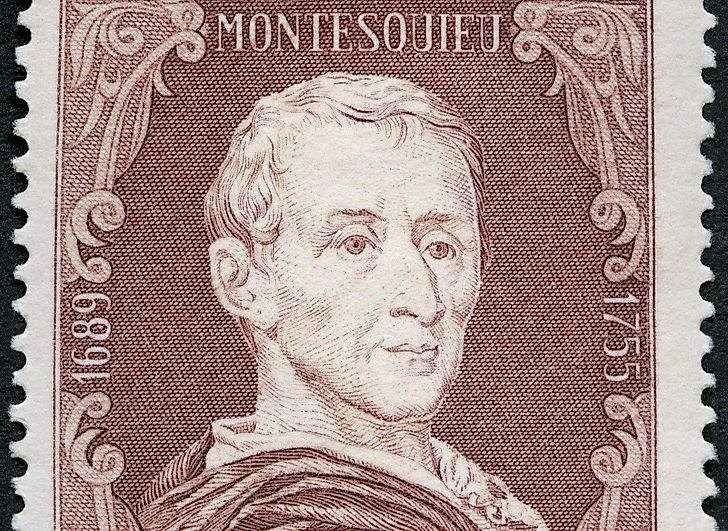What Does Separation of Powers Refer To?

“Separation of powers” is a specific model for how a state is governed. Under the model called the “separation of powers”, the government is split into major branches. Each branch is autonomous and has different powers and responsibilities. The idea behind the difference is that there should not be any conflict in their powers and responsibilities to ensure each branch functions smoothly. Consequently, there is no such thing as unchecked power for any one branch that may encourage the rise of a dictatorship.
Mostly, the model has three branches namely a legislature, a judiciary, and an executive. This three-pronged model of the separation of powers is also known as a “trias politica” model. Most people tend to interchange the phrase “separation of powers” with “trias politica,” which is wrong. Trias politica is only a form of separation of powers. Some countries rely on bipartite instead of tripartite systems, which are just as effective.
History
Aristotle first came up with the idea of a mixed or hybrid government by analyzing many forms of administration in Ancient Greece. Years later, John Calvin (a French theologian) advocated for the use of a biparty system where power was shared between an aristocracy and a democracy. Further, he suggested the implementation of power checks to avoid the misuse of power. By advocating for such a system, he encouraged the rise of democracy and the quelling of political absolutism.
In 1620, a group of English Anglicans and Congregationalists known as the Pilgrims Fathers established North America’s Plymouth Colony with a bipartite democracy. After that, other colonies came up with similar forms of government. For example, the Massachusetts Bay Colony started in 1628, while Connecticut came later in 1636. Most of the new colonies also added the freedom of religion, which further laid the groundwork for human rights.
Back in England, there were popular books that had written about the advantages of such forms of government. An example of such a book was the “History of Plymouth Plantation” written by William Bradford. Philosophers such as John Locke picked up on the idea as well and propagated the advantages of such a system by drawing heavily from the English model. The English had split power three ways between the legislature, the federative branch, and the executive.
Charles-Louis de Secondat
From the above, it is clear that the groundwork for tripartite systems had already been laid down. However, most historians credit the "tripartite system" to French philosopher Charles-Louis de Secondat (Montesquieu). However, it is crucial to note that he used the term “distribution” of powers as he explained in his book “The Spirit of the Laws,” which was published in 1748.
In his book, Montesquieu described how power could be divided between a legislature, a judiciary, and an executive. His idea was to come up with a system that did not place too much power on a single person, as was the case with "aristocracy." In coming up with the new system, the philosopher drew heavily on the British constitutional system and the Constitution of the Roman Republic. His book actually helped in the Constitution of the United States and the Declaration of the Rights of Man.
Checks and Balances
The main idea of separation of powers is coming up with checks and balances such that each division has the power to limit the other two. These checks then create balance because each branch would not want the other to have too much power. Therefore, they would be constantly confronting each other thus freeing people from political abuse.
Immanuel Kant came up with a famous statement advocating for this system. He argued that even a nation of devils could sort out the problem of establishing a state. According to him, the problem could be solved simply by coming up with a strong constitution that would ensure opposing groups are pitted against each other. Simply put, ambitious people have to be pitted against each other if the common people are to enjoy freedom and democracy.
The system also sees to it that each branch has the power to defend its powers in case any other branch wants to take over. The power of a branch to defend itself was deemed necessary and more effective compared to simply giving guarantees that each branch would be independent. The idea of check and balances is also attributed to Montesquieu.
In the tripartite system, there are three major branches. However, there are additional branches that are equally important. These may include the auditory, electoral, the civil service commission, and the prosecutor branches.
In Practice
Several countries in the world practice the three-branch system. However, the concept of separation of powers is implemented differently in almost all countries. Each country has had to adopt its own idea of separation of powers based on historical events and other factors. Interestingly, the very country that Montesquieu drew from (the UK) does not have a strong separation of powers. In practice, the entire system in the UK is highly intertwined.
Norway
Norway has three major branches. The parliament is the legislature while the courts (supreme, high, and lower) make up the judiciary. The executive is composed of The King, the Cabinet of Norway, the Prime Minister, the Civil Service, and government departments. However, Norway is a bit interesting when it comes toactual implementation.
In Norway’s 1814 constitution, the idea of separation of powers as written by Montesquieu was adopted. However, people were skeptical about political parties and wanted to keep on with their old system of leadership that involved a king and a council.
Consequently, the king continued ruling supremely until political parties emerged in the 1880s. Before that, in the 1870s, a conflict between the legislature and the executive had started. Eventually, in 1884, the legislature impeached the council and thus came the reign of the parliamentary system.
In the new parliamentary system, the original idea of Montesquieu was cast aside since the legislature (the parliament) became supreme over the others. The other two branches are still there and play crucial roles. Under the system, checks and balances are implemented under the 1918 Party-list proportional representation model. The system ensures that it is nigh impossible for a single party to gain an absolute majority.
However, it is important to note that the multi-party system was not originally formed as a system of checks and balances. The system came about after public outcry that there were too few parties and the absence of representation.
China
The Republic of China follows the concept of the "separation of the five powers" as outlined by Sun Yat-sen. China has five branches namely the Executive Yuan, Legislative Yuan, Judicial Yuan, Control Yuan, and the Examination Yuan. In the country, the President and the Vice President are not included in any of the branches above.
In addition, the relationship between the branches is not explicitly defined, which brings further confusion. In extreme cases, the government can come to a complete paralysis if the president’s party is the minority. The paralysis arises because the president cannot work on any agreements (in case of a minority for his party) with the legislature and cannot call new elections or dissolve the legislature.
Fusion of Powers
The opposite of separation of powers is a fusion of powers, which is most common among nations following the Westminster system. Under this system, the executive and the legislature are extensively intertwined. Examples of such nations include Sweden, Israel, and others.











